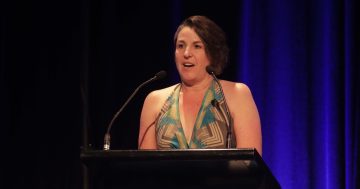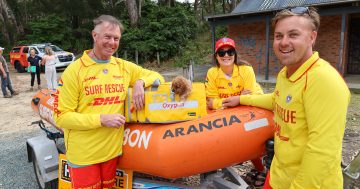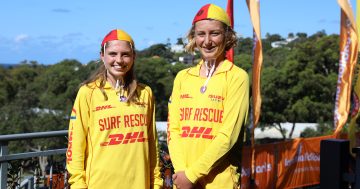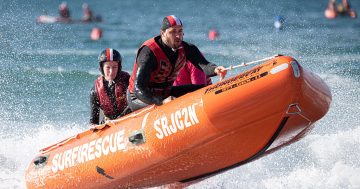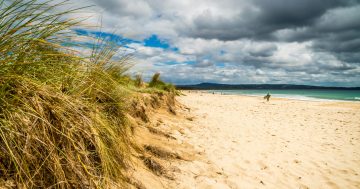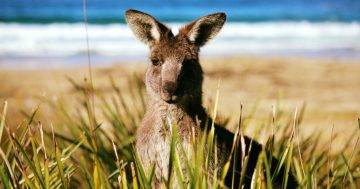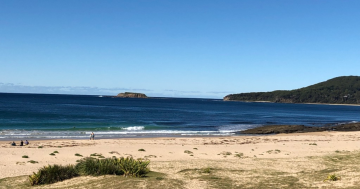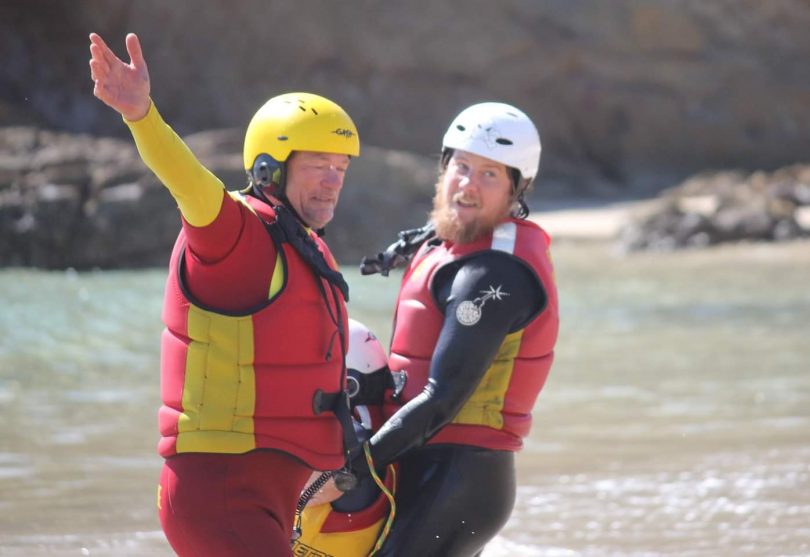
Surf lifesavers on the NSW Far South Coast performed more rescues in 2020 than in 2019. Photos: Surf Life Saving NSW.
Surf Life Saving NSW is urging everyone to swim at patrolled beaches during the Australia Day long weekend after the number of rescues on the NSW Far South Coast tripled as more people than usual chased the sun, sea and sand.
The Far South Coast Surf Lifesavers, which covers 184 beaches between Batemans Bay and Pambula, performed 30 rescues between January and December 2020, compared to just nine during the previous year.
Its message of “If we can’t see you, we can’t save you” is a reminder to people avoiding busy beaches and seeking out remote swimming spots during COVID-19.
Swimmers can use the Beachsafe app or website to find patrolled beaches and real-time information such as when a beach is closed.
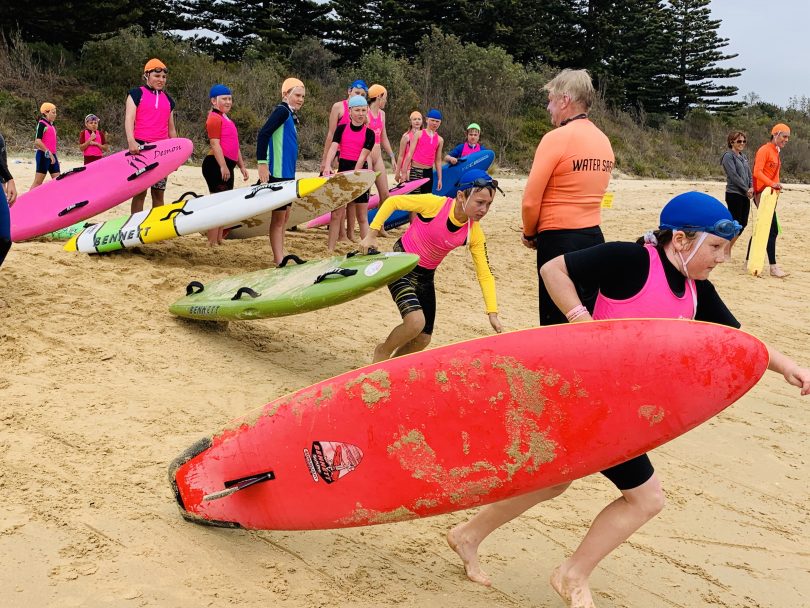
Surf lifesavers, including Nippers, undergo intense training to learn how to rescue someone from the water. Photo: Supplied.
Choosing to swim between the red and yellow flags could be the difference between life and death, says Cheryl McCarthy, director of Surf Life Saving NSW, Far South Coast Branch.
“Our job is to identify the hazards for you,” she says. “Whether those are rips or a part of a beach that’s more dangerous at low or high tide, we place our flag accordingly.”
“Swimming at a patrolled beach also means we’re a lot closer to you so if you or a family member gets into trouble, our response time is a lot quicker. And you don’t have a lot of time when you get into trouble in the water.”
Even the most beautiful beaches can be the most dangerous so anyone stepping onto an unpatrolled beach should know how to identify a rip, says Cheryl.
On average, rip currents are responsible for at least 21 drowning deaths in Australia each year, and on 17 January, 2021, a woman died after being caught in a rip at Congo Beach, south of Moruya.

On average, 4.5 people drown each year while trying to rescue someone in Australia’s coastal waterways. Photo: Supplied.
“A lot of people don’t know what a rip looks like,” says Cheryl. “You can always come down to a patrol and ask the surf lifesavers to show you what one looks like. There are also links and videos to help identify rips on the Beachsafe app or website.
“However, if you’re not confident with how to identify a rip, you should not be at an unpatrolled beach.”
Even with the best-laid plans, things can go wrong in the ocean in a matter of seconds, and sometimes a bystander is the only person available to help.
However, a recent study, ‘Dying to Help’, found on average 4.5 people drown each year while trying to rescue someone in Australia’s coastal waterways.
The majority of fatalities took place at NSW beaches (64 per cent), in regional or remote areas (71 per cent), more than one kilometre from the nearest lifesaving service (78 per cent), during summer (45 per cent), in the presence of rip currents (73 per cent), and did not involve the use of flotation devices to assist rescue (97 per cent).
A bodyboard or even an esky can help you to float while trying to rescue someone, says Cheryl.
“People don’t understand how difficult it is to support someone out of the water, even a child, particularly if they’re panicking,” she says.
“A lot of rescuers drown because it’s exhausting and that’s when the water is flat, then add waves and rips. So having a floatation device, no matter what it is, is so important.”
Before jumping in to save someone, always call triple zero (000) and let the operators know you have a water emergency. They will then contact Surf Life Saving. Alternatively, find a surfer with a board to help, says Cheryl.
“Surfers do an amazing job,” she says. “Every day at beaches around Australia, you see surfers helping out in the water. They’re experienced in the water, good at identifying when people are distressed and they have a floatation device.”






